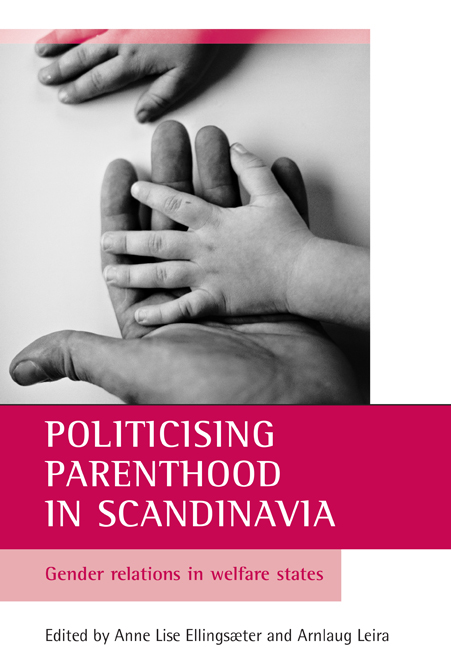Book contents
- Frontmatter
- Contents
- List of boxes, figures and tables
- Acknowledgements
- List of contributors
- one Introduction: politicising parenthood in Scandinavia
- Part One Politicising parenthood – legacies and challenges
- Part Two Gender equality and parental choice in welfare state redesign
- Part Three Work, family and the welfare state: redefining family models
- Index
ten - Diverging paths? The dual-earner/dual-carer model in Finland and Sweden in the 1990s
Published online by Cambridge University Press: 15 January 2022
- Frontmatter
- Contents
- List of boxes, figures and tables
- Acknowledgements
- List of contributors
- one Introduction: politicising parenthood in Scandinavia
- Part One Politicising parenthood – legacies and challenges
- Part Two Gender equality and parental choice in welfare state redesign
- Part Three Work, family and the welfare state: redefining family models
- Index
Summary
Introduction
In much feminist comparative research on welfare state policies, Finland and Sweden are seen as similar cases. Both countries have for a long time supported gender equality by policies encouraging employment for mothers and childcare for fathers. Both are welfare states that have moved away from the male breadwinner model and towards a dual-earner/dual-carer model. This is confirmed in a recently conducted state-of-the-art review of welfare states and motherhood, where the two nations were classified in the same category in all 13 studies that included both countries (European Commission, 2002). There are also, however, researchers who oppose the idea of Finland and Sweden supporting the same kind of model. Mahon (2002) argues, for example, that since the 1990s, the two states have promoted different models. In her terminology, parenthood policies in Sweden continue to be committed to strengthening the egalitarian model, while the more recent development in Finland reflects a move towards neofamilialism.
This means, according to Mahon, that in Finland the development is moving towards a model that encourages parents to stay at home for long periods after the birth of a child, and thus departs from the basis of institutionalised childcare as a right of social citizenship. This model emphasises choice between a (temporary) homemaker role and paid employment. In Sweden, on the other hand, the development exhibits a continued commitment to and strengthening of the egalitarian model. This has been pursued through a dramatic expansion of publicly financed childcare – even in the 1990s, in spite of the economic recession – and the introduction of the ‘daddy quota’ in the parental leave, which offers incentives for parents to share infant care. The parental leave is short enough to limit adverse effects on women's income and situation in the labour market, and the supply of public childcare is large enough to cover demand.
We believe that any analysis of change in policy models and their outcomes needs to be interpreted in relation to labour market developments and macro-economic conditions more generally. These are important premises for parents’ opportunities of choice. It is sometimes assumed that policies furthering women's position and gender equality are prone to retrogression and to cutbacks in times of economic recession. In such an economic situation women might increasingly be defined through motherhood, while men are increasingly defined as workers and earners.
- Type
- Chapter
- Information
- Politicising Parenthood in ScandinaviaGender Relations in Welfare States, pp. 217 - 240Publisher: Bristol University PressPrint publication year: 2006
- 2
- Cited by



